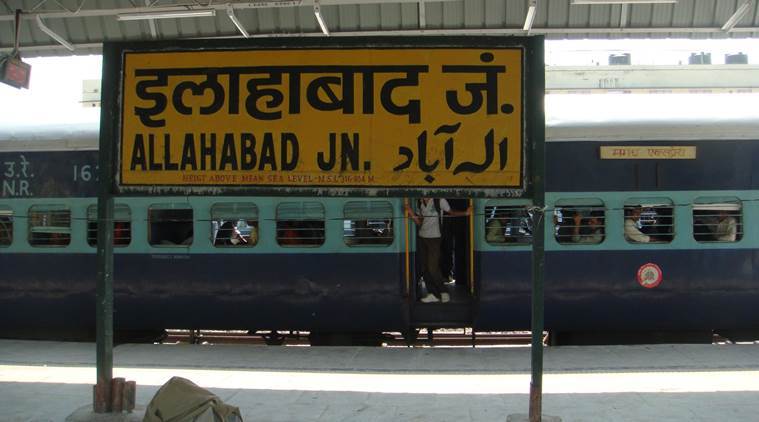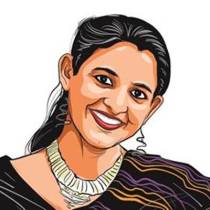The Allahabad in Prayagraj
Renaming places creates ruptures in the people’s lived experiences.

Allahabad will now be known as Prayagraj (Name/Source: Superfast1111/ Wikimedia Commons)
The naming and renaming of places is not new in India. The British, for example, renamed Kochi to Cochin, derived the name Calcutta from Kolkata and affirmed their power through urban planning and architecture. Recently, several cities as well as streets and bazaars in the country have been renamed. Modern communication methods ensure that such changes in nomenclature have an instant impact.
Such projects are deeply political. They aim to politicise community memories. But not only do such endeavours not acknowledge the ruptures they create, they also overlook the history of cultural consciousness. Cities, streets and bazaars evolve their own identities with time. In doing so, they reflect historical experiences and changes. This is why the public often resist the overt manipulation of renaming. For example, though several years have passed since Connaught Place in Delhi was renamed Rajiv Chowk, the public relates to the market by its colonial name. The new name is only linked to the metro station — a new public space within the larger one.
Re-naming results in tangible changes, but several intangible aspects of places continue to be associated with the lived reality of communities. For example, Varanasi may today be the official name of the historical city, but culturally, its idea will always be “Banarasi”. The local carefree, bold and energetic lifestyle of the city’s people is still called Banarasi bindaas and the old name is still the identifier of the sarees produced in Banaras as well as the paan and the Langda mango.
The recent renaming of Allahabad as Prayagraj ignores the existence of a Prayag railway station in Allahabad district. Enormous resources and paperwork is required to establish the new political/official identity of not only the city but of the entire district. The renaming could create confusion. It overlooks memories of the city’s cultural identity that is linked to poets like Akbar Allahabadi, artists like Jankibai “Chhappan chhurivali” and even guavas (Allahabadi amrood). Allahabadis pride themselves on producing writers like Firaq Gorakhpuri, Harivansh Rai Bachchan, Nirala, Dharamvir Bharati in much the same way as Banarasis are proud of Premchand, Bhartendu Harishchandra, Kishan Maharaj and Bismillah Khan. Often places in cities are named after such people, and the nomenclature, anchors the cultural histories of urban centres. The distinct identity of institutions very often go against re-naming projects. The Banaras Hindu University is one such example. In the case of Allahabad, questions will be raised about the names of institutions like the Allahabad University or the Allahabad Bank, with which millions identify.
Re-naming Bombay as Mumbai, after Mumba Devi, by the Shiv Sena government in 1995 — along with renaming the Santa Cruz Airport as Chatrapati Shivaji Airport — was not merely about shedding associations with the colonial past. The renaming also marked an assertion of Maratha identity. The American political scientist, Myron Weiner’s work, Sons of the Soil, Migration and Ethnic Conflict in India, is useful to understand the politics of renaming. New names are cultural tools to overcome the fears of economic subordination by adventurous immigrants. The changes create fissures in local and regional political arenas and make them rife for conflict.
Renaming cities results in economic and logistical upheaval. A large amount of the tax payer’s money is spent on changing signboards on public properties such as railways, metros, buses and street signs, not to mention the time and energy invested in bureaucratic, administrative and legal procedures. Maps have to keep pace with the frequent renaming. Mayawati changed a number of names of cities, locations, public spaces and streets to assert Dalit identity when she was the UP chief minister. Akhilesh Yadav’s Samajwadi government reversed many of her decisions. One can imagine the amount of resources that were spent on both the projects.
Satellite cartographic networks often fail to keep up with the frequency of changed ground realities and people and transporters waste time to reach their destinations.
Several instances of renaming are simply preposterous. For example, there is a proposal to rename Shimla, that receives a lot of snow, as Shyamala or the dark one. Or renaming Humayun Nagar as Hanuman Nagar. In the absence of a comprehensive cultural policy, the politics of renaming is inimical to urban community consciousness. Those in power may want to escape their responsibility by saying that they are merely following the footsteps of preceding governments. However, the point is that they were voted to invest in development and not to continue fragmentation and create more ruptures.
The writer, a dancer, is the vice president of the Centre for New Perspectives
For all the latest Opinion News, download Indian Express App
More From Navina Jafa
- A Shared Cultural MapMuch more than politics and security links Balochistan and India ..
- Culture Needs A PlanInstitutions for the arts need professional managers for a turnaround..
- Strange affinitiesThe creation of linguistic states erected artificial political boundaries between regions...







































No hay comentarios:
Publicar un comentario